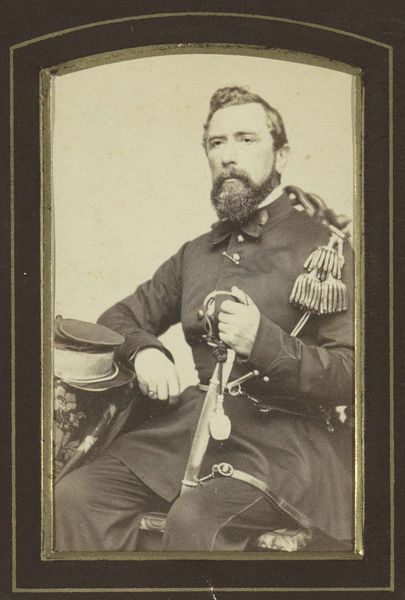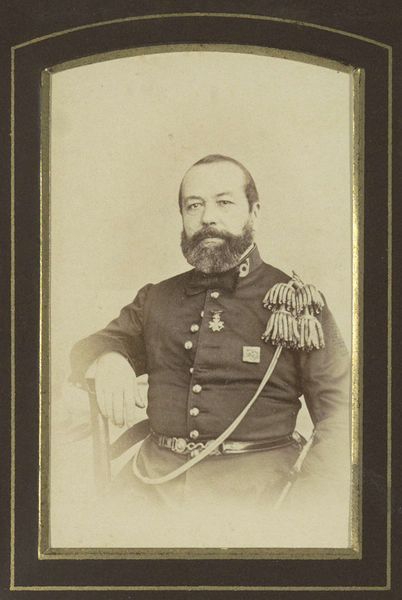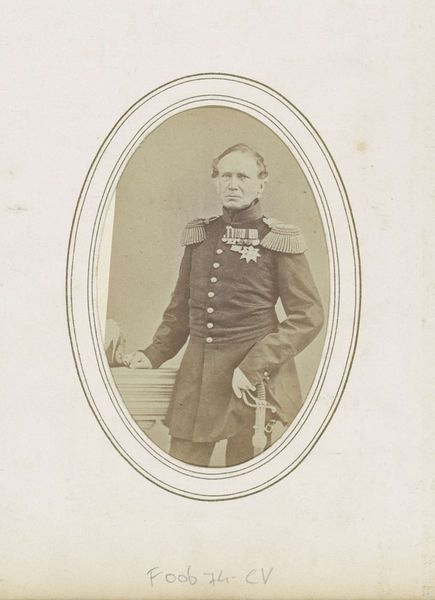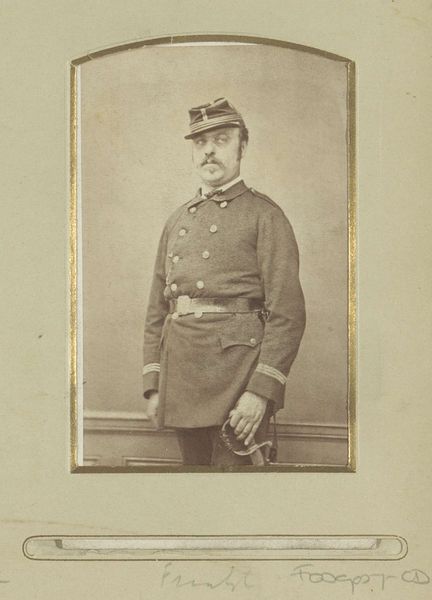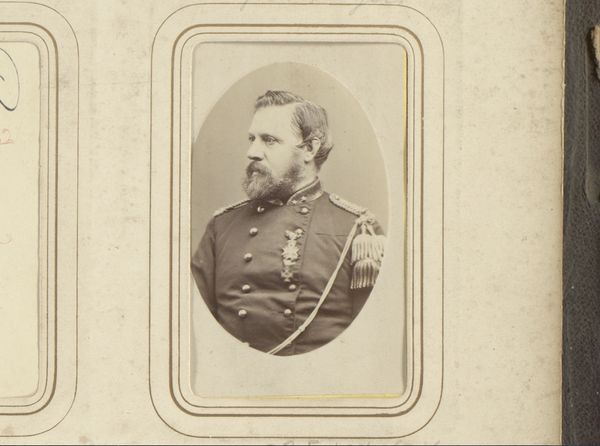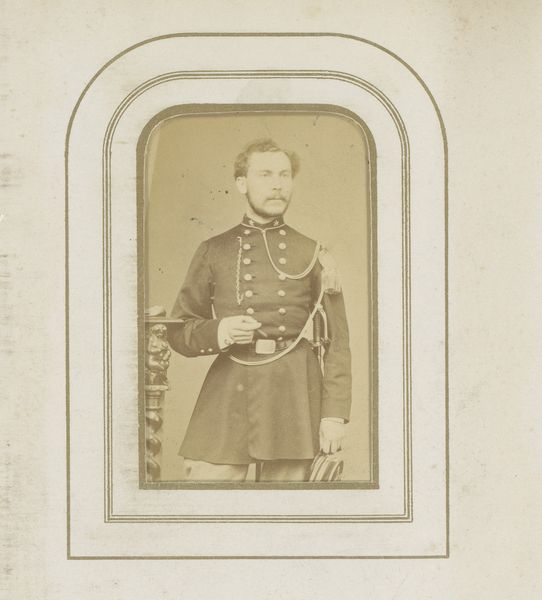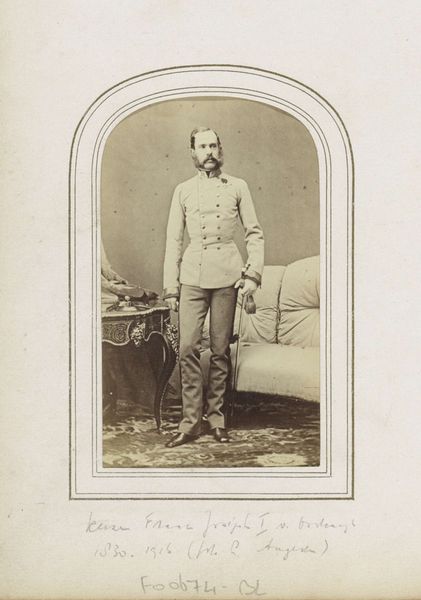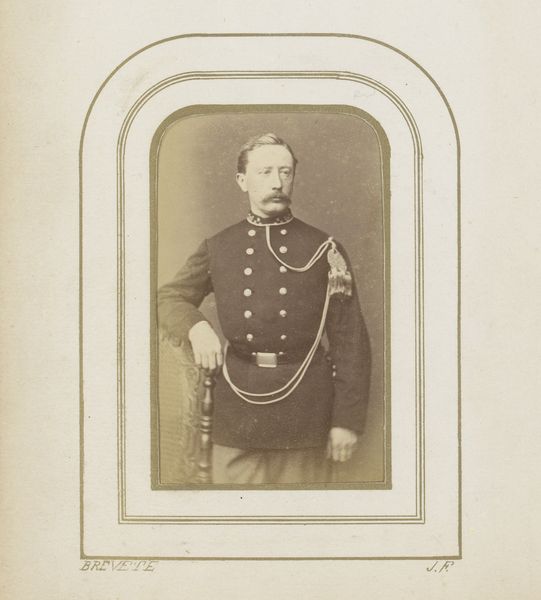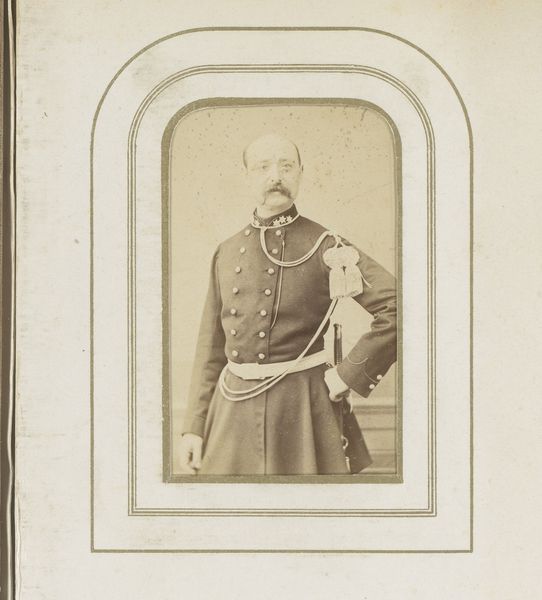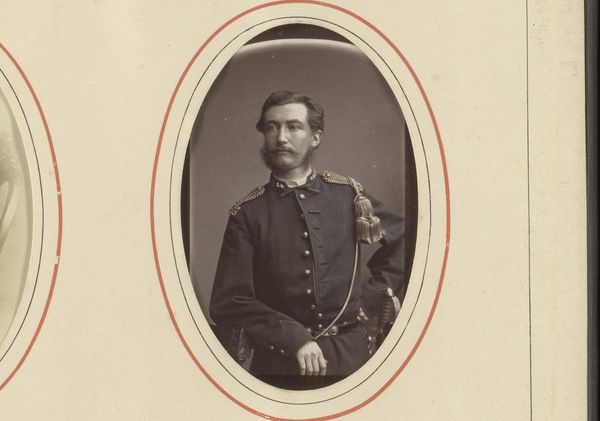
Portret van een (vermoedelijk) Nederlandse militair, zittend met onderscheidingen c. 1857 - 1880
0:00
0:00
Dimensions: height 104 mm, width mm
Copyright: Rijks Museum: Open Domain
Curator: This is an albumen print titled "Portret van een (vermoedelijk) Nederlandse militair, zittend met onderscheidingen," or "Portrait of a (Presumed) Dutch Military Man, Seated with Distinctions." It comes to us from the Rijksmuseum and was made sometime between 1857 and 1880 by Woodbury & Page. Editor: It's immediately striking how stoic he appears. The muted tones of the photograph enhance the gravity of the image. I am wondering about the origins of this particular photographic printing process. It certainly holds the marks of history. Curator: The albumen print, a 19th-century process using egg whites, was praised for its exceptional detail and tonal range, ideal for portraiture. He wears his uniform proudly, complete with distinctions, all of which symbolize not only service but ideals of the period, of honor, discipline, and empire. Editor: Fascinating that egg whites created such striking resolution and contributed to a material reality of image-making! The arrangement of medals pinned to the man's jacket provides subtle commentary on hierarchies, and status conferred by conflict and political structures. Curator: Precisely, consider how those medals acted as symbolic capital. Their placement isn't accidental. Also, there's something deeply moving about a preserved moment from so long ago. The collotype printing emphasizes the permanence of the record of military duty. Editor: Indeed, it provides insight into not only the man, but also how labor went into constructing these artifacts, now precious archival remnants. It would be wonderful to have insights into how Woodbury & Page were structured as a business, or details about the labor practices employed at the time to realize these photos. Curator: Right, that speaks to larger cultural structures of representation in photographic archives of the nineteenth century and questions about authenticity, legacy, and cultural meaning, given its origins within colonialism. Editor: The historical context illuminates a narrative far beyond just one individual’s face—a conversation of labor, photographic practice, social stratification, and memory-making through image production. Thanks to photography and this preserved moment we may also reflect on historical notions of sacrifice and service. Curator: Thank you! A perfect summation: where a photograph moves beyond merely documenting, towards revealing deeper narratives of cultural memory.
Comments
No comments
Be the first to comment and join the conversation on the ultimate creative platform.
